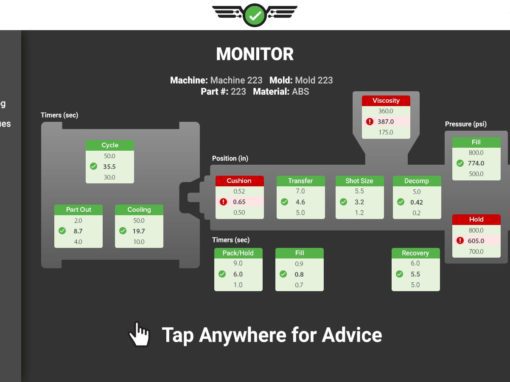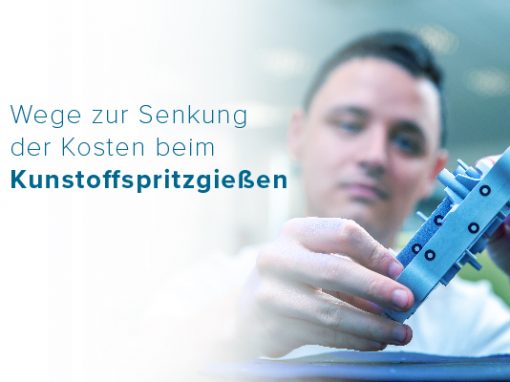Tip of the Day 55: Finding Correlations to Part Quality with eDARTs
The attached paper came out of some discussions with customers about “how do you do a DOE?” In one case just a few minutes before he was starting one.
What is “D.O.E.?”
The acronym stands for “Design of Experiments” (“Doing of Experiments according to Bob Launsby). In the manufacturing context this means making process changes and measuring the results to see what process changes cause changes in the manufactured product. In our context I quote from the paper that a designed experiment means “Figuring out which of the four cavity variables to force in order to change the parts, how to force them, working the plan (doing the experiment), measuring the parts, finding correlations and setting alarms.”
In the past we have sometimes offered education in this department. Some of that education was a bit general and did not focus on plastics variables or on using the eDART to do an experiment. In any case this is not a regularly scheduled at this time.
So I got to thinking: How can I make a sort of one page crib sheet that would explain the essence so that people could get an experiment designed properly and not foul it up and have to do it over? Mike Groleau reminded me of much of the core. We tried it out when Melanie was teaching here and corrected some items. It comes to one page – front and back, though. It does not cover all of the off-line analysis (that is in the Alarm Settings Document and the Auto Correlator document). It has two additional pages with diagrams to help promote understanding of some concepts.
How to use the paper
This is by no means the definitive word on designing experiments. Rather this is a memory jogger to get you or a customer thinking about what steps to take to make sure that good in-cavity variables and values drive part containment. It is also an aid in not forgetting something such as starting the experiment and finding you have no way to label the parts.
If you are interested in doing a DOE go through each step in the planning and place a tick mark next to each step as you do it.
Since the annual sales meeting last March when this document was created I have been adjusting and adding to it. I thought it was time to send out the latest copy. This includes several things I have learned by doing. You can discard the old tip or document and replace it with this one.
First is that the word “Designed Experiments” tends to be reserved for a certain branch of the science of which our process is a subset. So I have renamed the document “Finding Correlations to Part Quality with eDARTs”. Some of the things I have added are as follows:
Under “1. C. Which plastics variables most likely affect those part characteristics?”
- Melt temperature and mold temperature are important in crystalline.
- Weight: pressure including packing and then pressure discharge after pack or at end of hold.
- Note: Time constraints may limit the number of variables
We did a “real” correlation study for a customer’s part and discovered some more practical things that I had not noted before.
- Setting the limits on values to change may require experimentation. For example, if you are trying to correlation to dimensions and you already know a part with sink or flash is a bad part then it makes no sense to push the limits of pressure out to where the parts cannot even be measured. Also it does not make sense to go so far that you exceed your machine’s capabilities or the capabilities of the machine on which the parts will eventually be made. There is a new section on setting practical limits.
- Plan part handling very carefully on a part with fast cycles or many cavities. You can have so many parts coming out of the machine that labeling them or even finding a place for all of them can be surprisingly difficult, especially in the thick of things.
- I added some wording about setting up the “Sequence Settings” to get good fill times and integrals.
- Process stability is another important point added to the new document: Getting the process stabilized in the first place, making sure the baseline (center) has not changed and also not stopping in the middle to make machine adjustments or label parts.
This has been an ever evolving document. The above are a few of the items included in the new one. While it is quite dense and takes some heavy reading and thinking, it contains a great deal of our practical knowledge on the subject. I hope it helps.

